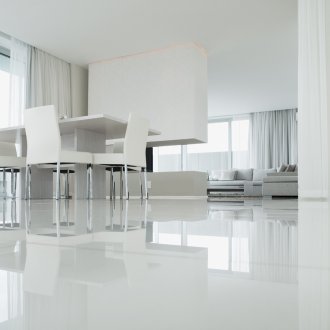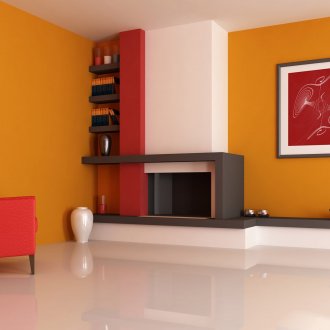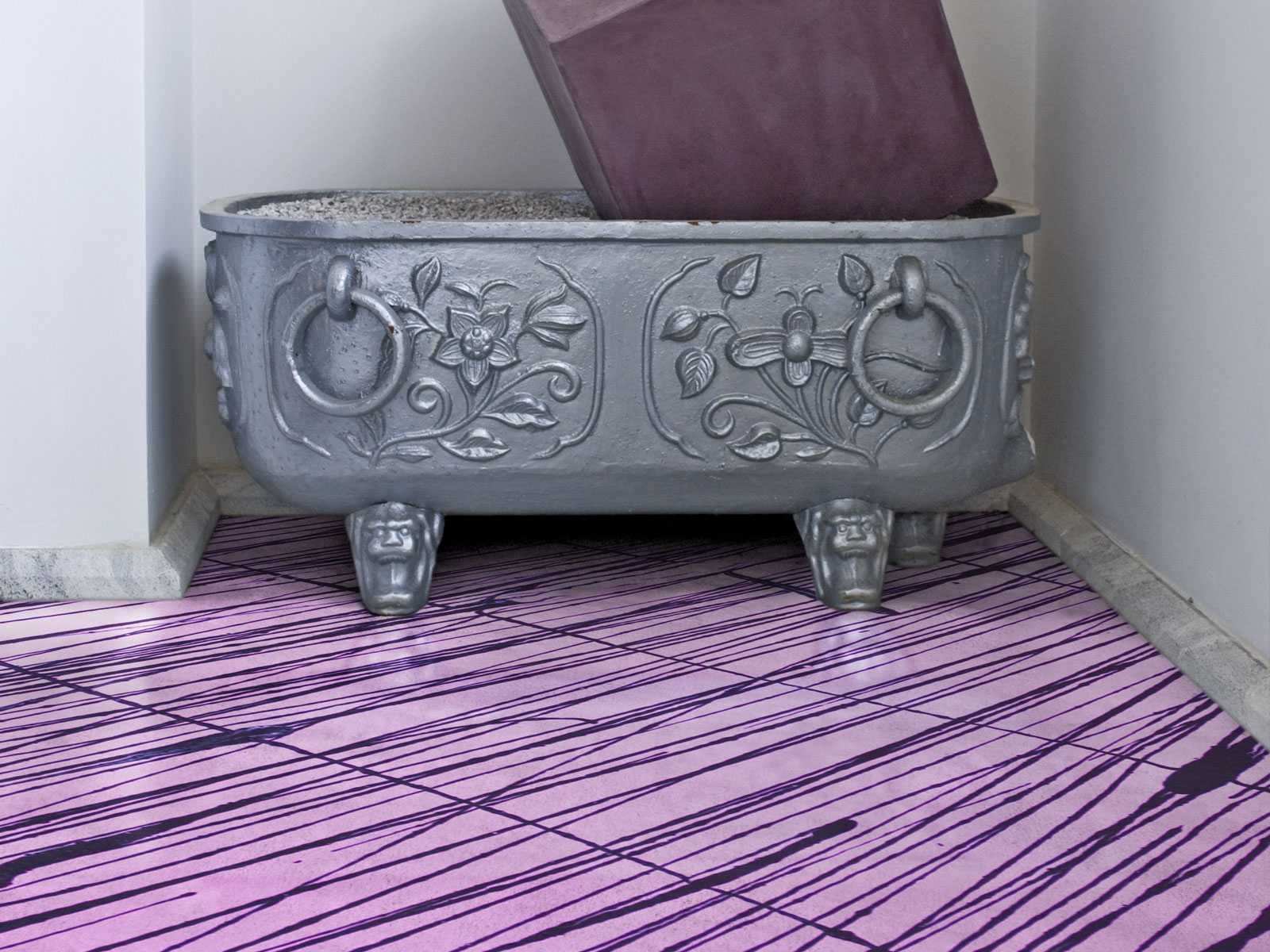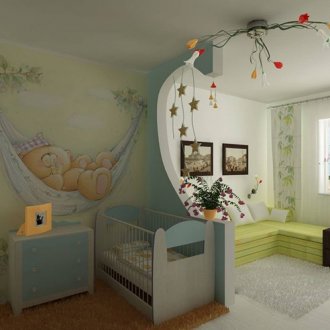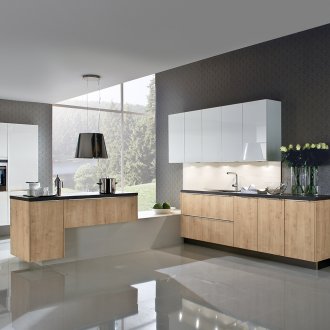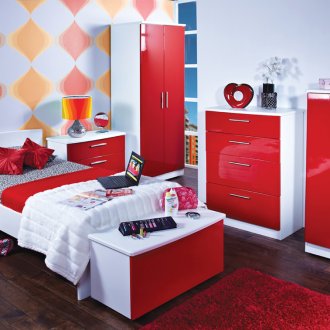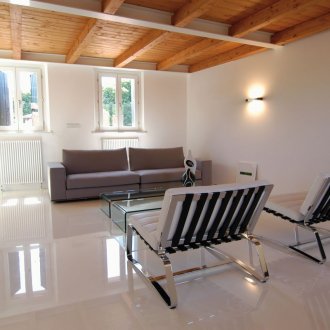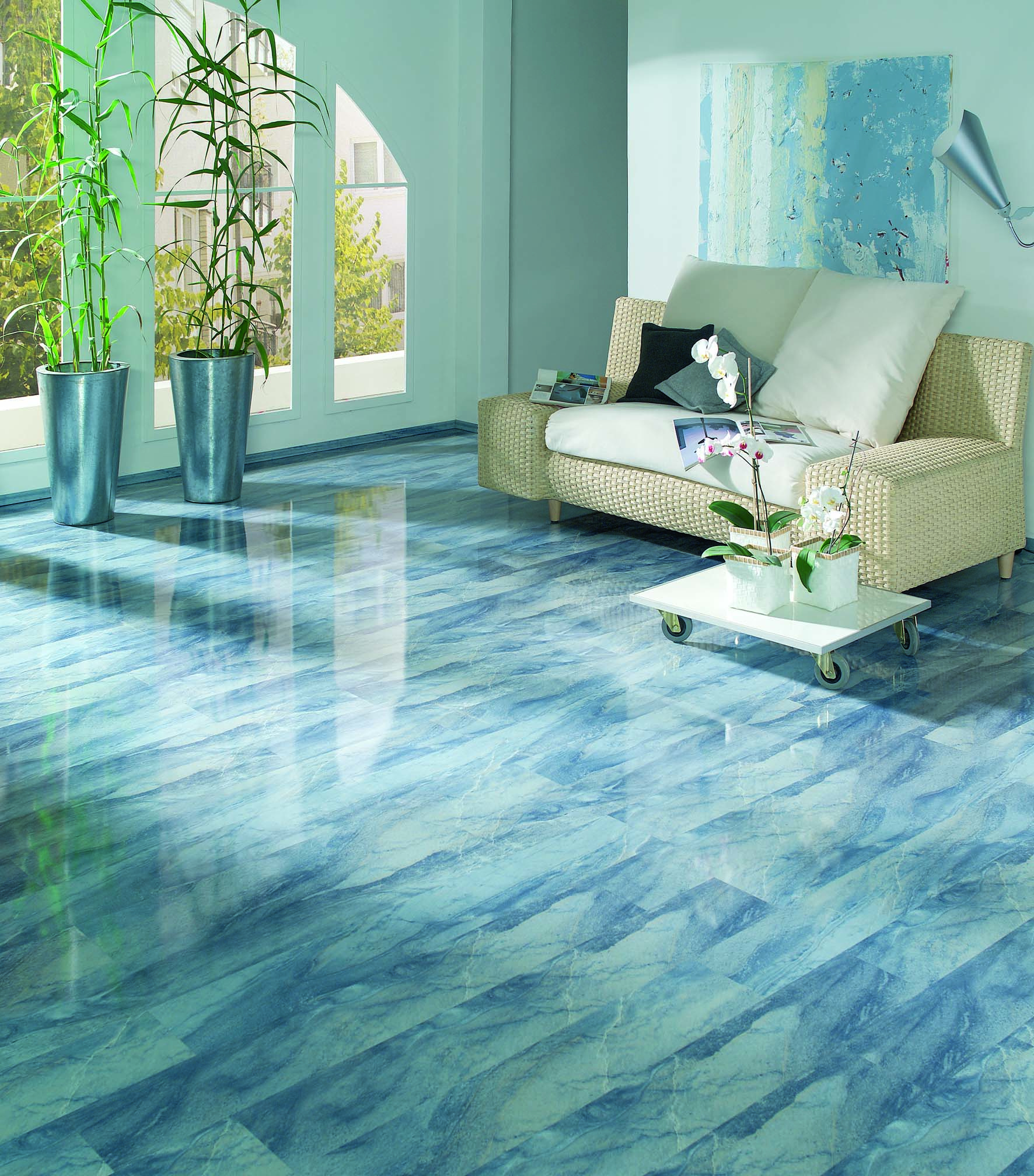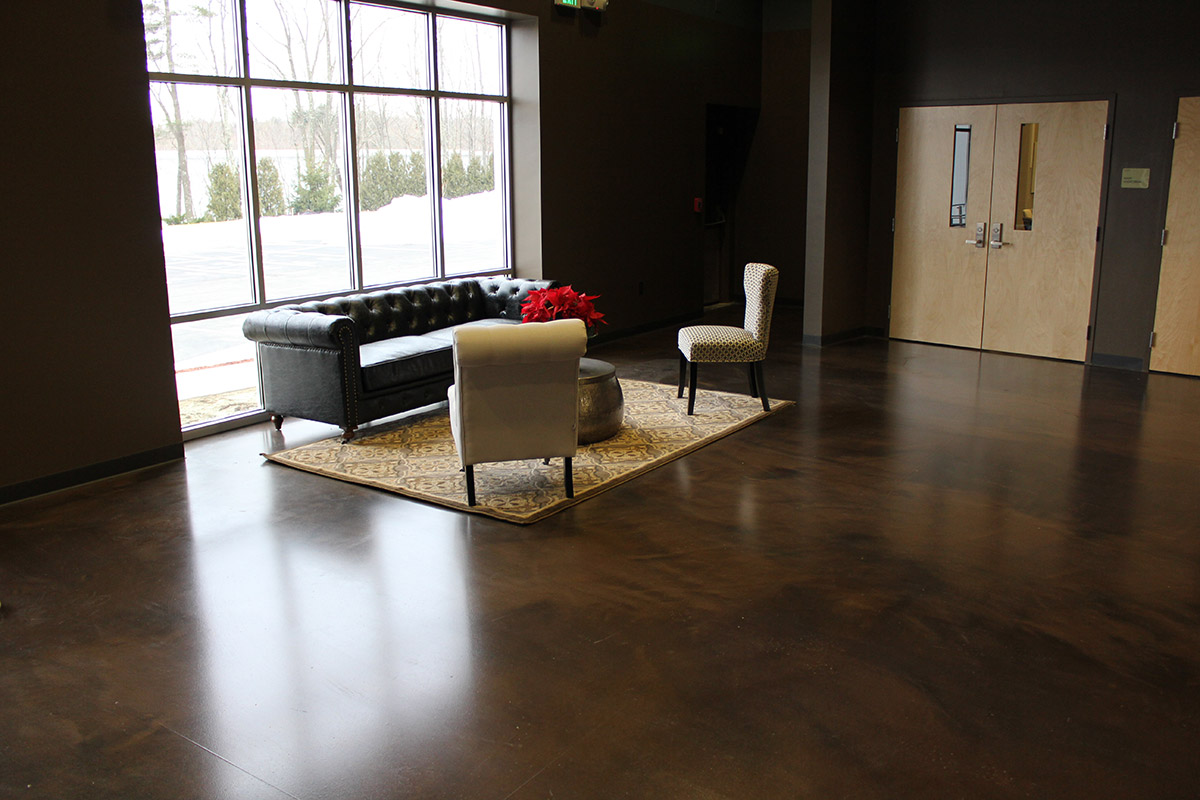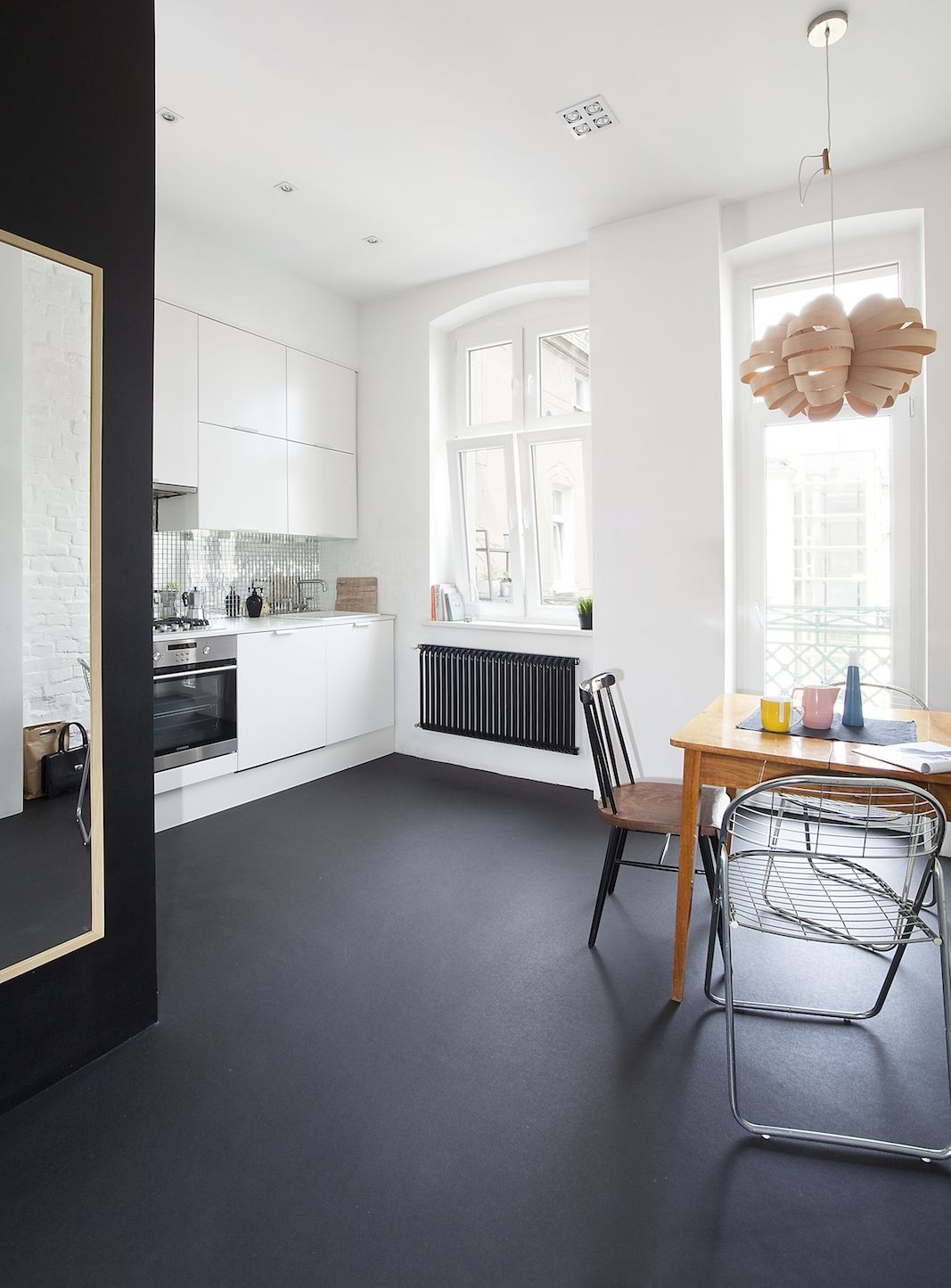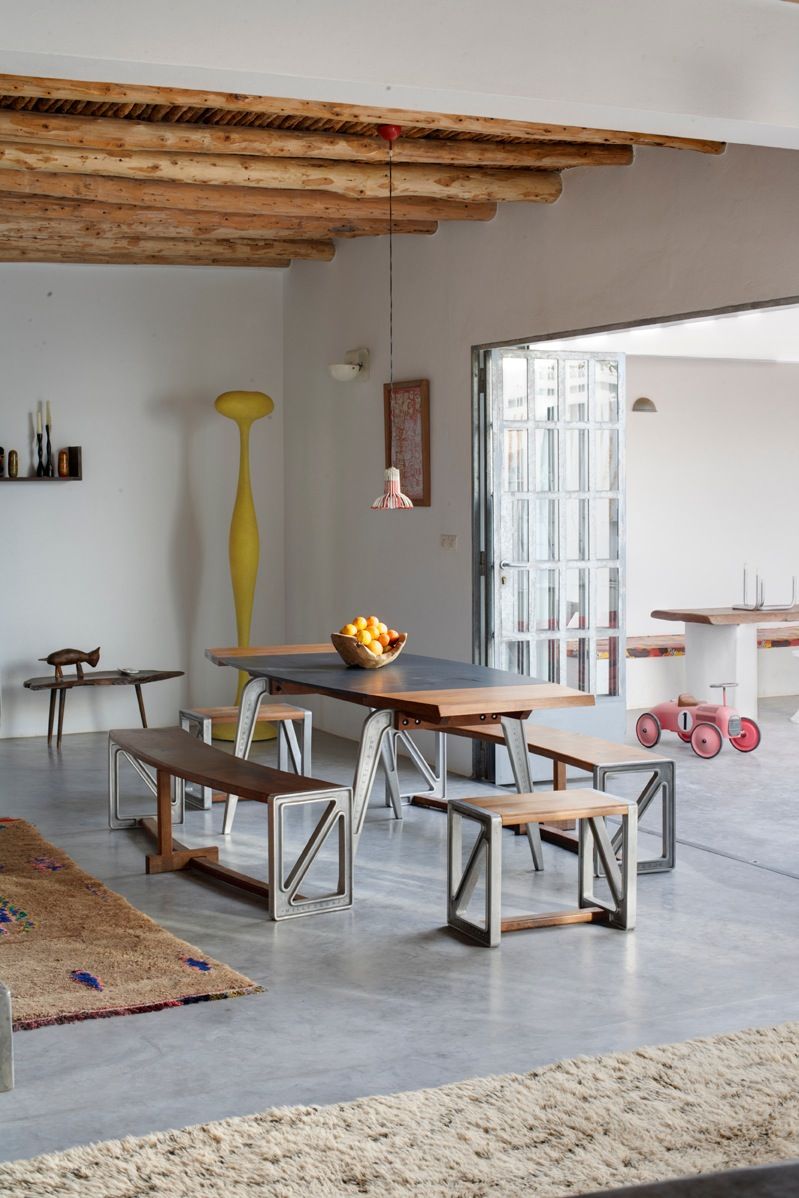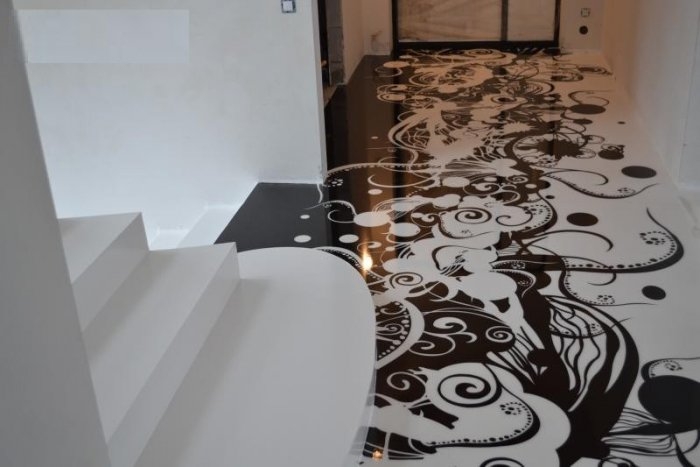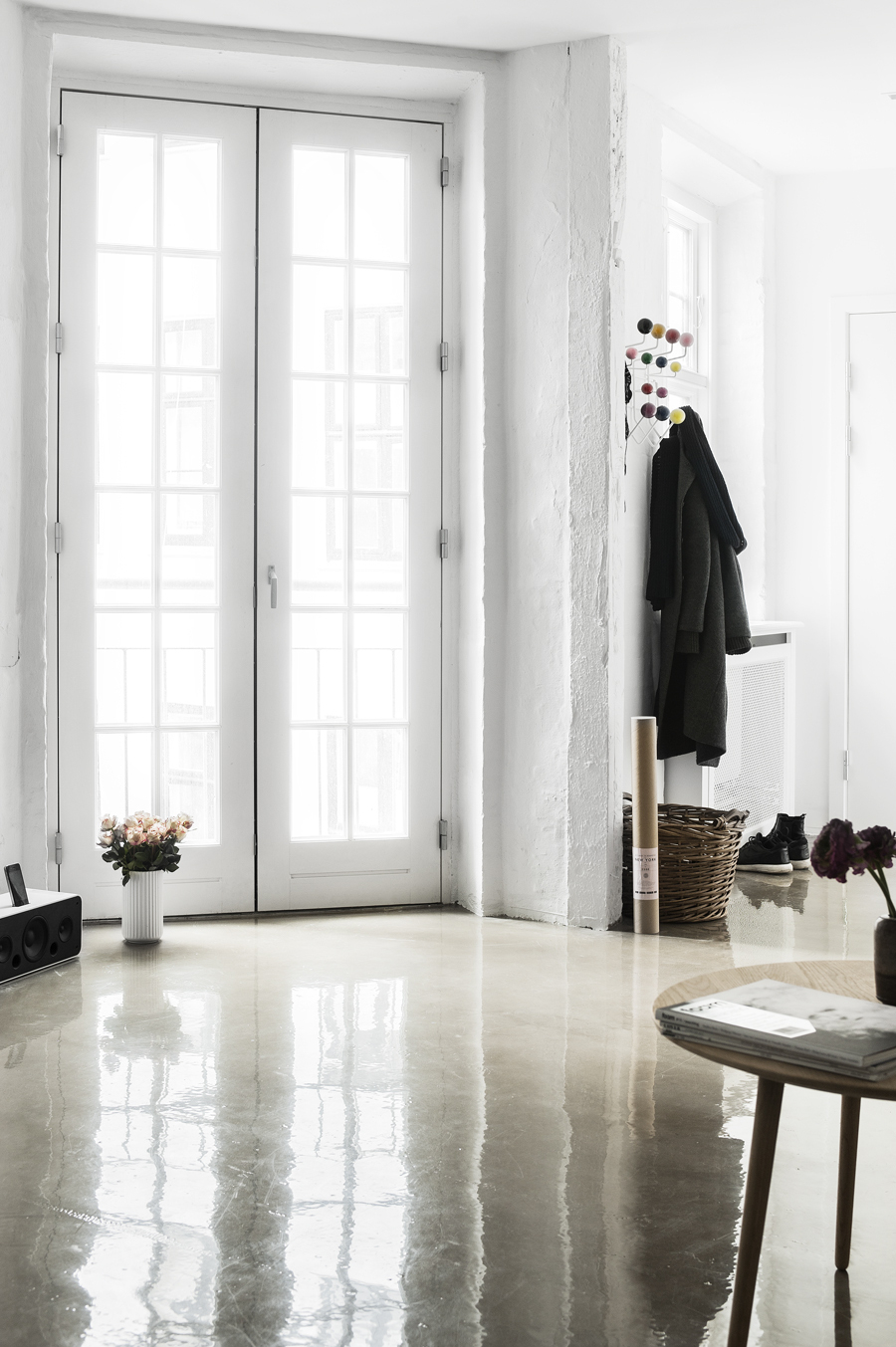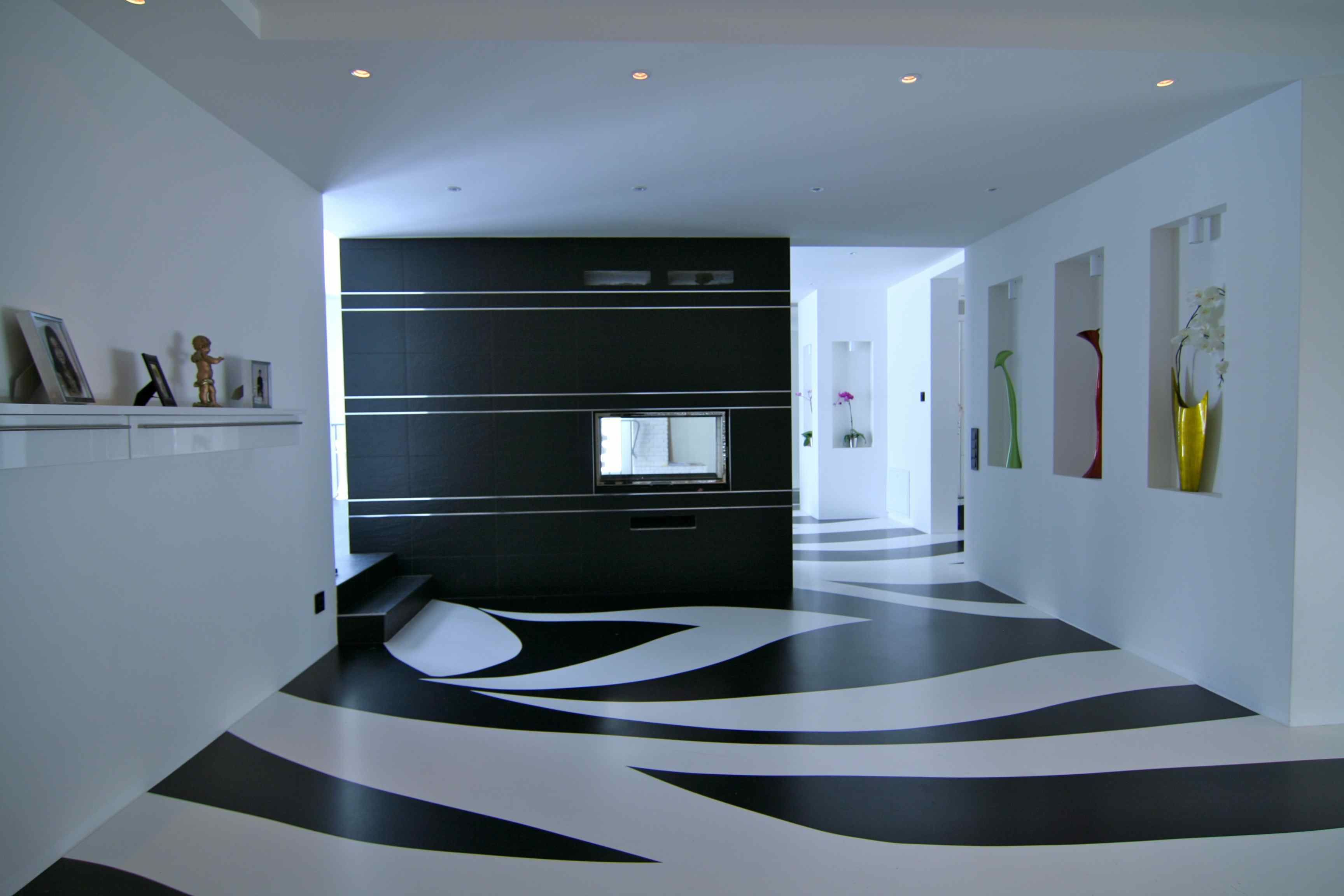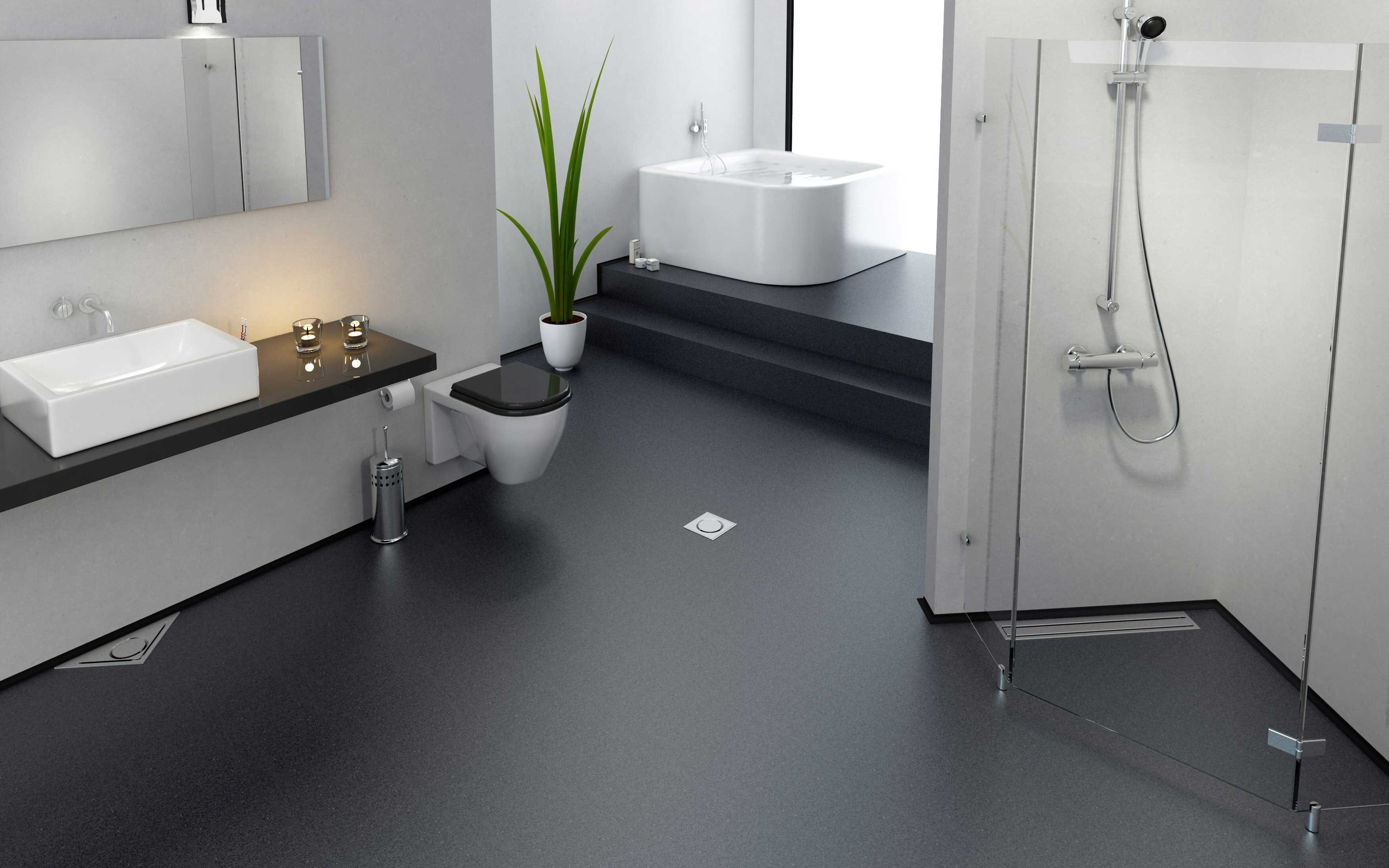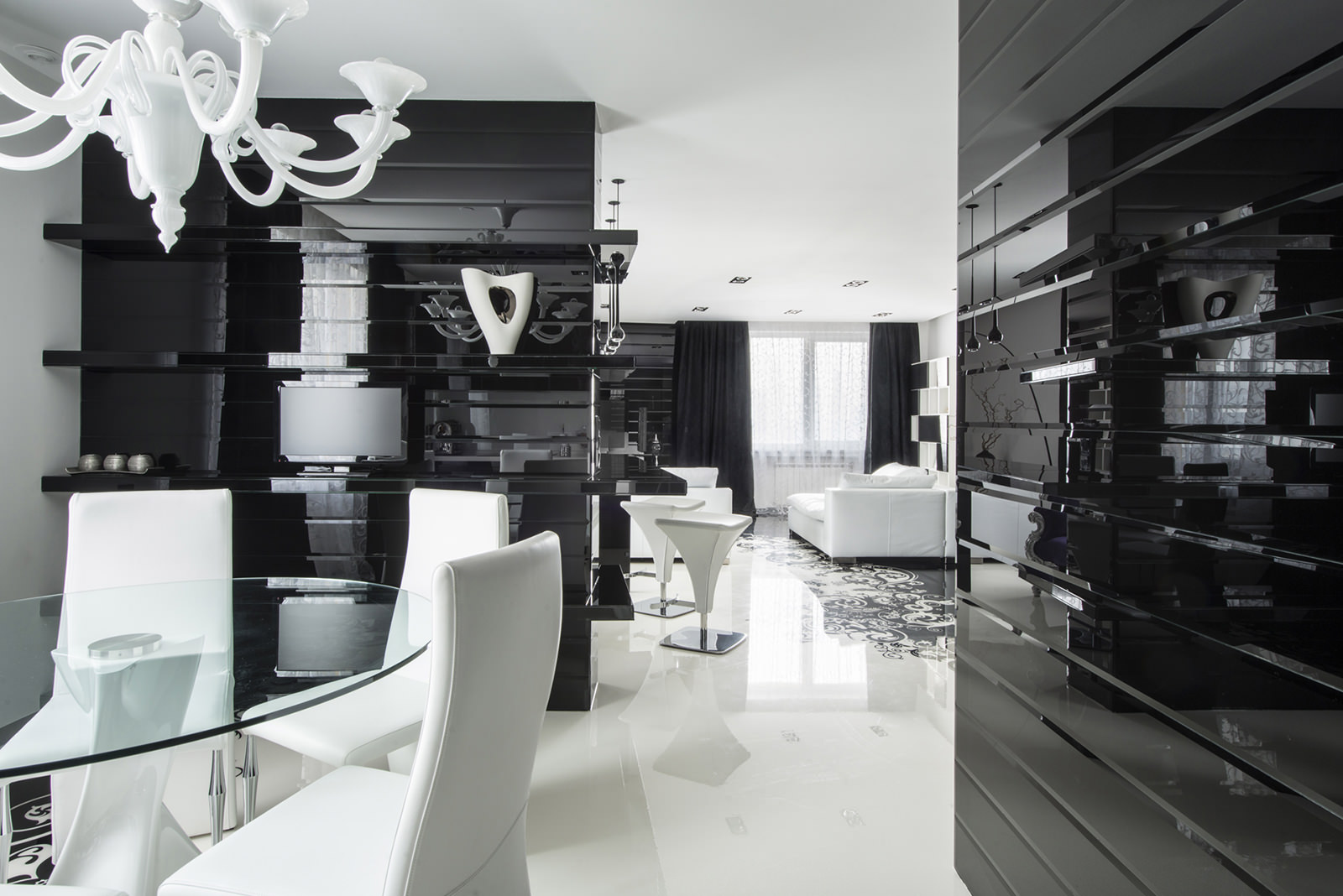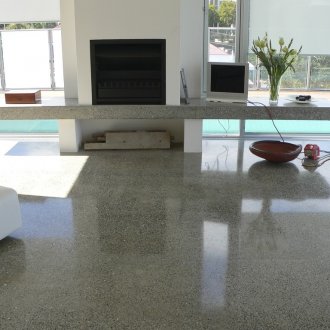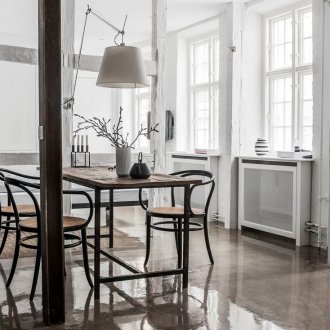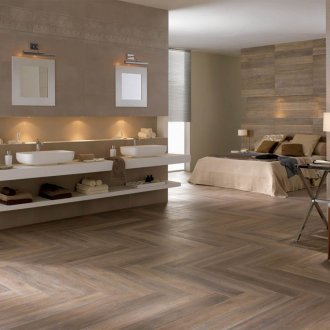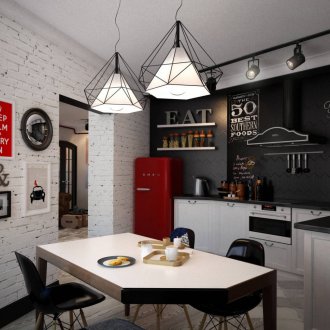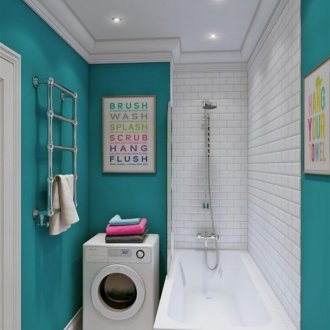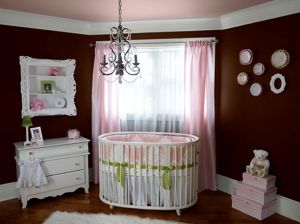Bulk floor in the interior - a new depth (25 photos)
Content
The bulk floor has high mechanical strength and resistance to a chemical, aggressive external environment, which allows it to be used in many rooms. The duration of operation depends on the proper preparatory work, compliance with installation requirements and the quality of the mixture.
Classification of bulk floors
To obtain a high-quality flooring, 2 layers of bulk floors are usually used:
- the main one, which smooths out all the bumps and is made up to 8 cm thick;
- finish, which determines the appearance of the flooring in the room.
In some cases, linoleum, parquet boards or similar floor coverings are placed on the main layer instead of the topcoat.
When choosing a floor covering, you should pay attention to the composition of the incoming components.
According to this criterion, mineral mixtures are used, which are used for the most part for the main layer, and polymer, which ensure the creation of the upper layer.
In turn, polymer coatings are:
- polyurethane, which, depending on the structure, are divided into thin-layer and highly filled;
- methyl methacrylate, the most resistant to overload and aggressive external environment;
- epoxy, with brittleness and increased moisture resistance.
Advantages of the bulk floor
Thanks to the operational characteristics and installation features, the following advantages of the bulk floor are distinguished:
- high aesthetic indicators, which are manifested in a wide variety of design solutions, for example, the use of 3-D images;
- mechanical strength, allowing the floor to remain intact even after exposure to heavy loads;
- durability, providing up to 15 years of comfortable operation;
- high moisture resistance, allowing the use of bulk floor in the bathroom;
- UV resistance, as a result of which self-leveling floors in the apartment do not fade from exposure to sunlight;
- environmental friendliness allowing to use bulk floors in the room where there are children or people prone to allergies;
- lack of smell, despite the influence of external factors, for example, heating from an electric heater;
- compliance with fire regulations, since all types of bulk floors are fireproof and do not emit harmful substances during combustion;
- quick installation, largely depending on the type of mixtures used;
- the ability to complement any room design, for example, by applying decorative bulk floors;
- seamlessness, as a result of which the floor in the apartment does not let spilled water down.
Disadvantages of bulk floors
When choosing bulk floors for an apartment, one should take into account the possible disadvantages of this floor covering that you will have to face. For example, the cost of flooring, which is especially high when using imported flooring mixtures. Also, you can fill the floor only at a certain humidity, which is difficult to control.
During repair, it is necessary to make a difficult dismantling of the old coating for good adhesion to the base.Scratches may occur as a result of improper filling or operation; the glossy bulk floor becomes slippery after washing, which is especially dangerous for the elderly;
In addition, the self-leveling floor with a pattern can bother or cause difficulties when changing the design.
Pouring the bulk floor alone is quite difficult, since the solution quickly hardens and loses its properties, so work should be done in command.
Basic rules for pre-training
The basis for the bulk floor is a concrete slab, cement screed, ceramic tile. The floor in a private house is often made of wooden floorboards and the main advantage of bulk coatings is the ability to fill without dismantling in case of good condition and high strength of the old floor. At the same time, to prevent leakage of the bulk floor through the cracks, it is necessary to carefully fill all the openings between the boards.
For good adhesion, it is important to carefully remove all traces of oil, glue and other contaminants on the substrate. If possible, it is necessary to eliminate all irregularities on the surface.
To improve the adhesion of the polymer to the base, a surface should be primed. Depending on the porosity and rate of absorption of the primer, it may be necessary to repeat the priming process.
Tools used for filling
To fill, you need the following set of tools:
- Low speed drill or hammer drill for mixing mortar. It is necessary to take into account that the power of the tool is enough, and it does not fail due to overload or overheating. Pouring in the room should be continuous, so there will be very little time to cool the drill.
- Mixer nozzle. It is important to determine in advance a drill or a perforator will be used to mix the solution, since they have a different cartridge. As a result, the nozzle for mixing from the drill is not suitable for a hammer drill and vice versa.
- Buckets. The volume of the buckets must be at least 20 liters. Do not use dirty buckets, as pouring will turn out interspersed, which as a result will degrade performance.
- Putty knife. The mixture, although it has the name self-leveling, but under the battery and in hard-to-reach places it is better to level it beforehand to obtain a better flooring.
- Needle aeration rollers. The presence of air bubbles significantly reduces the mechanical strength of the bulk floor and, as a result, its durability. Therefore, air should be disposed of by carefully rolling the surface with a roller. For greater convenience, you should choose a roller with a telescopic handle.
- Mokrostupy. Special shoes with spikes, which allows you to walk on the still not frozen bulk floor for its uniform distribution over the entire surface and for other operations.
- Laser level. Most important for large areas of the premises or if 3D flooring is planned.
Features of floor coverings in rooms with high humidity
High humidity rooms include a bathroom and toilet. The bulk floor in the bathroom must withstand constant high humidity, the frequent hit of water on the surface, including hot, it should be easy to clean, but at the same time remain non-slippery; Do not allow microbes to multiply quickly, which is especially important for the floor in the toilet.
The choice of a bulk floor for a wet room is the most difficult. For example, it is forbidden to use thin-layer polyurethane floors due to their tendency to delaminate under prolonged exposure to moisture.
The floor of the toilet, made of methyl methacrylate polymer, will have a color limit. In order to depict a pattern or create an exclusive colored bulk floor, an epoxy resin base should be used.
Features of the bulk floor in the kitchen
The main factors that distinguish bulk floors in the kitchen from floor coverings in other rooms are:
- the presence of increased humidity near the sink;
- drops of fat and oil near the stove;
- there is a risk of spillage of aggressive substances, for example, vinegar essence, which can damage the self-leveling floor in the kitchen;
- increased hygiene requirements.
If you wish, you can make a white bulk floor in the kitchen, but various spots will be too noticeable on it. Therefore, for the convenience of cleaning the kitchen, it is recommended to choose a colored bulk floor. To create a creative design in the kitchen, a marbled floor can be used.
Gloss is often slippery, so it is preferable to choose a slightly rough self-leveling floor in the kitchen to prevent injuries due to falling.
Features of the bulk floor on the balcony
The bulk floor on the balcony is most exposed to external factors. So, for example, a black bulk floor in sunny weather can heat up to a high temperature, which is impossible in a living room. For this reason, for the flooring on the balcony, it is important that the linear temperature extensions of the substrate and the finish are the same.
Regardless of which self-leveling floor is chosen, compliance with the manufacturer's requirements, the choice of high-quality materials and tools will allow you to comfortably use the floor covering without flaws for several decades.
